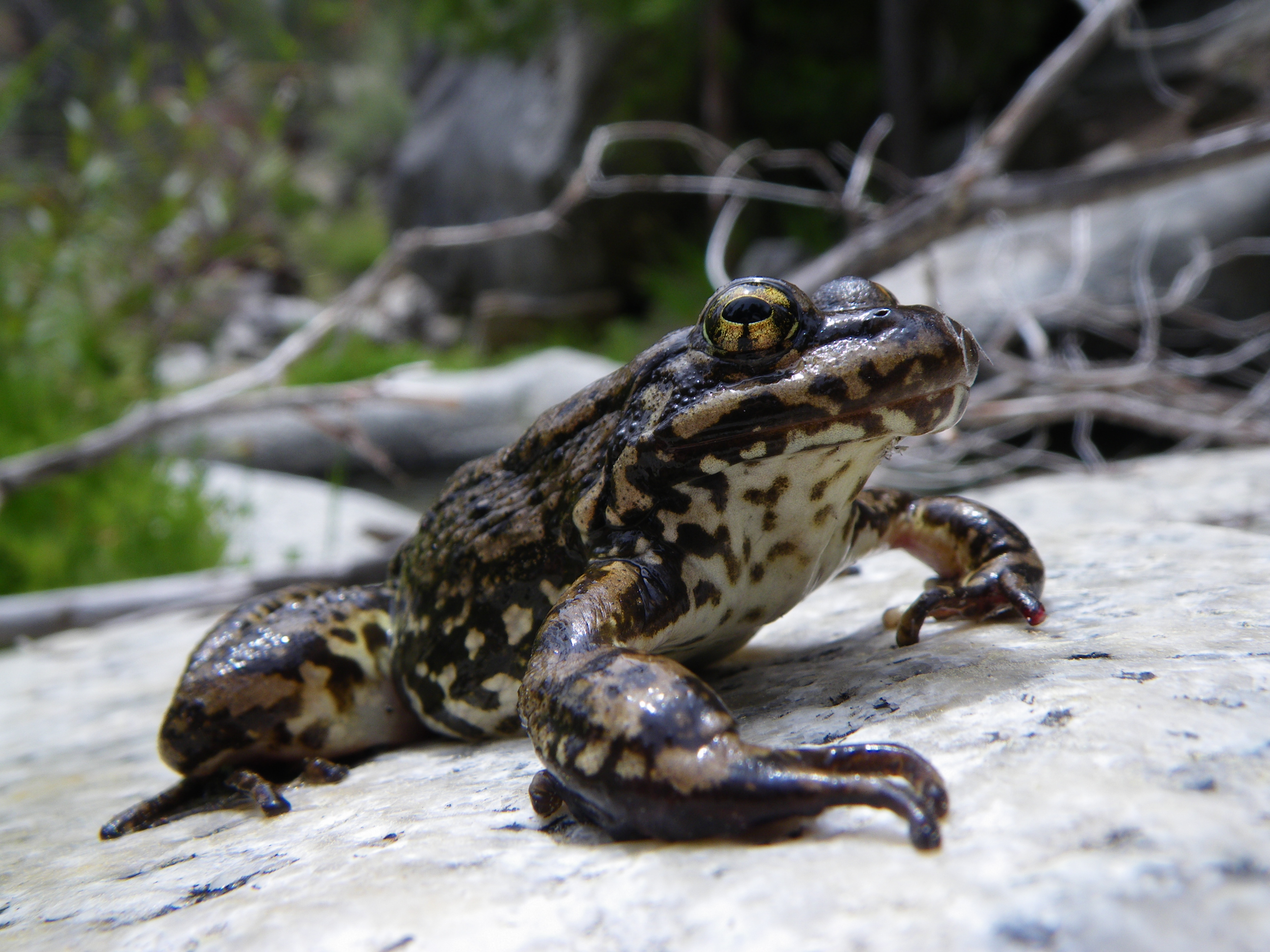Mountain yellow-legged frog (Rana muscosa) occur as two Distinct Population Segments (DPSs) in California: Northern California DPS and Southern California DPS (see Home Range and Critical Habitat below). The species spends most of its time directly at the water-land interface and is rarely found more than one meter away from water. On cold days and at night they move into deeper waters. Breeding at higher elevations occurs primarily in permanent lakes and ponds deeper than 4-meters. In lower elevation areas, most breeding takes place in low-gradient stretches of perennial streams.
Following breeding, frogs move to a wide variety of water bodies to forage, including streams, ephemeral ponds, marshes, and lakes. In late summer frogs leave ephemeral habitats as they begin to dry up and move to permanent water bodies. In the fall, frogs concentrate into deeper lakes and perennial streams in which they overwinter. Overwintering frogs occupy lake and stream bottoms, banks, near-shore bedrock
crevices, and springs.
Federal Status
ENDANGERED – Northern California DPS
ENDANGERED – Southern California DPS
California Status
ENDANGERED
Survey Protocol
Home Range and Critical Habitat
Map Data Source: California Wildlife Habitat Relationship (CWHR), USFWS Critical Habitat Data Portal
Photo credits: header (cropped) – Eric Sonstroem on Flickr, featured image – Adam Backlin (USGS) on Flickr
